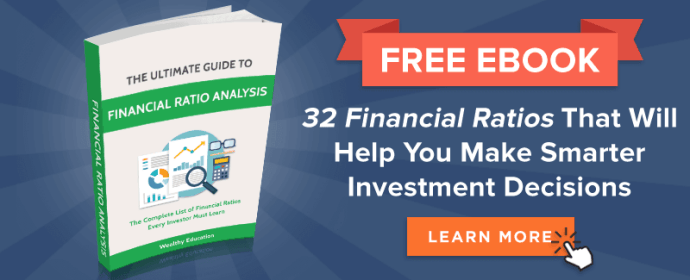This is a detailed guide on how to calculate Interest Expense to Debt Ratio with in-depth interpretation, analysis, and example. You will learn how to utilize its formula to examine a company's debt settlement capacity.
Definition - What is Interest Expense to Debt Ratio?
The interest expense to debt ratio is a simple calculation that can help us figure out the rate of interest a business is paying on its total debt.
To understand what must be included in a company's debt, we have to look at the interest expense figure.
Interest expense can be found on the company’s Income Statement. It includes the interest outgo on both the short-term and the long-term debt.
Any borrowings that the firm is paying interest on need to be included in the debt figure.
If the interest expense figure includes interest paid on capital leases, then the corresponding leases have to be included in the debt calculation to ensure an apples to apples comparison.
More...
Formula
Okay now let’s look at the formula to calculate interest expense to debt ratio:

Interest Expense to Debt Ratio = Total Interest Expense / Total Debt
This ratio can be easily calculated by dividing the total interest expense by the total short-term and long-term debts.
You can easily find the short-term and long-term debt figures reported on a company’s balance sheet under Liabilities section, and the interest expense figure on its income statement.
Example
Now that you know the exact formula for computing this ratio, let’s dive into an example so you can understand exactly how it actually works.
Assume that you are looking to determine the interest rate that a particular company is paying on its long-term and short-term debts.
For example, this company paid $500 as interest expense in the last year. Its balance sheet shows its long-term debt as $4,000 and short-term debt as $500.
- Total debt = $4,000 + $500 = $4,500
- Interest Expense = $500
Plugging these figures into the given formula, we’ll arrive at the interest expense to debt ratio as follows:

So, the result tells us that the firm is paying 11% interest on its debt. We will look at how to gain insights from this value in the following section.
Interpretation & Analysis
This solvency ratio can help us figure out if the firm is going through financial distress or credit problems.
In fact, a firm that’s going through a phase of financial distress will have a higher interest expense to debt ratio.
The interest rate charged by any lending institution depends on the risk factor associated with the loan.
The more debt a firm has, the higher the chances that it might not be able to repay it on time. So, any further loan will come at a higher interest rate.
While looking at this ratio, we should keep in mind the lending cost of the firm’s competitors or peers.
If the interest expenses to debt ratio is substantially higher than that of the peers, then we have to dig deeper to find out the exact reasons.
It could be due to a large loan has been taken recently at a higher interest rate or an acquisition that the firm completed taking on the acquired company's debt on its books.
Cautions & Further Explanation
A lower interest expenses to debt ratio is usually a good sign. It tells us that the firm has the ability to raise money at cheaper interest rates.
But we have to keep in mind that cost of raising debt is less than that of equity in most cases (debt has the added benefit of tax shield).It may be possible that the firm is not utilizing the benefits of leverage optimally.
It may also be the case that the company secured funding at low interest rates by agreeing to restrictive covenants.
In that case, a lower value of this ratio does not necessarily signify good financial health of the firm.
On the other hand, a significant increase in this ratio in any quarter or year should raise eyebrows.
But, you need to investigate whether the reason is financial distress or a one-time non-recurring event such as an acquisition.
Just like other financial ratios, you have to look at this ratio and find out the underlying reasons for it being unusually high or low compared to the firm’s peers.
Once you have done that, you will be able to accurately comment on the company's financial position and its ability to take on new debt.


